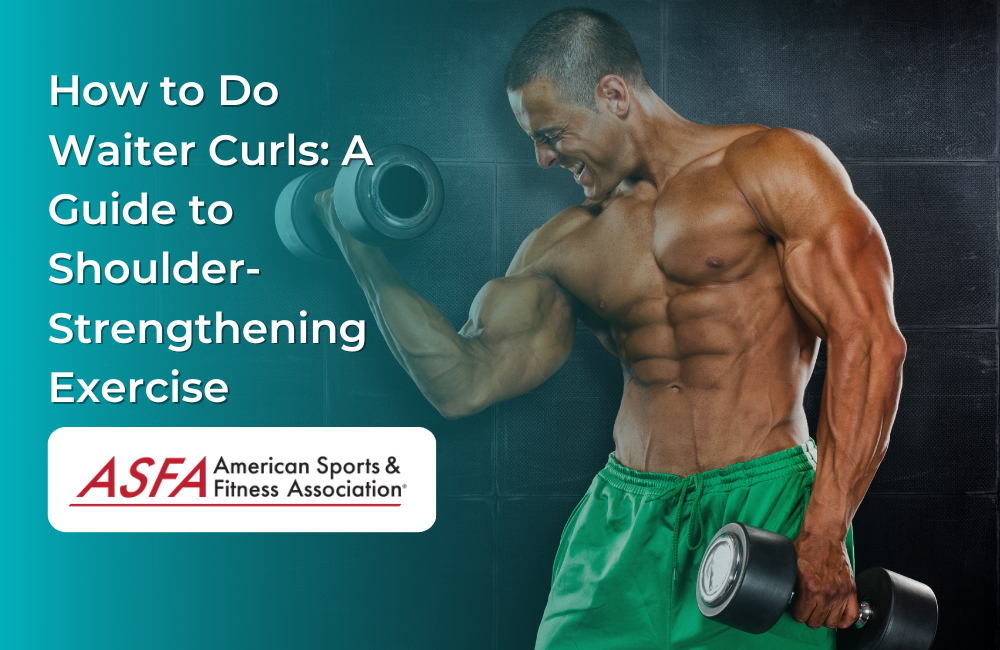Waiter curls, also known as waiter's curls or waiter's carry, are a challenging and effective exercise that primarily targets the shoulders while also engaging the muscles of the arms, back, and core. This exercise is named after the way a waiter carries a tray overhead, making it a great choice for developing shoulder stability and strength. In this guide, we'll walk you through how to perform waiter curls with proper form to maximize the benefits and reduce the risk of injury.
Benefits of Waiter Curls
Before we dive into the technique, let's explore some of the benefits of incorporating waiter curls into your fitness routine:
- Shoulder Strength: Waiter curls target the muscles of the shoulder complex, including the deltoids, which are responsible for shoulder stability and mobility.
- Functional Fitness: This exercise mimics real-life movements that require overhead arm strength, making it valuable for everyday activities like reaching for objects on high shelves or lifting items overhead.
- Core Engagement: Balancing a weight overhead engages the core muscles to stabilize your spine and maintain proper posture.
- Improved Posture: Waiter curls can help correct shoulder imbalances and promote better posture by strengthening the upper back and shoulder muscles.
- Injury Prevention: Strengthening the shoulder muscles can reduce the risk of shoulder injuries and discomfort.
How to Perform Waiter Curls
To perform waiter curls properly, follow these step-by-step instructions:
1. Equipment and Setup:
- You will need a dumbbell or kettlebell for this exercise. Choose a weight that is challenging but manageable for your fitness level.
- Stand with your feet shoulder-width apart, maintaining a neutral spine and engaging your core.
2. Grip and Starting Position:
- Hold the dumbbell or kettlebell in one hand with an overhand grip (palm facing forward).
- Start with your arm fully extended, holding the weight by your side.
3. Lifting Phase:
- Begin by bending your elbow and lifting the weight toward your shoulder.
- Keep your elbow close to your body as you lift the weight.
- Continue the movement until your forearm is perpendicular to the ground, and the weight is at shoulder height.
4. Hold and Stabilize:
- Once the weight is at shoulder height, pause for a moment to stabilize and engage the shoulder muscles.
5. Lowering Phase:
- Slowly lower the weight back to the starting position by straightening your arm.
6. Repeat and Switch Sides:
- Complete the desired number of repetitions with one arm before switching to the other.
Tips for Proper Form
To ensure you're performing waiter curls correctly and safely, consider these additional tips:
- Keep your core engaged throughout the exercise to maintain stability and prevent arching your lower back.
- Focus on controlled movements. Avoid using momentum to lift the weight.
- Your wrist, elbow, and shoulder should all be in a straight line when the weight is at shoulder height.
- If you're new to this exercise, start with a lighter weight and gradually increase as you build strength and confidence.
- Perform waiter curls in front of a mirror, if possible, to monitor your form and ensure your shoulder stays stable.
Incorporating Waiter Curls into Your Routine
Waiter curls can be included in your upper body or shoulder-focused workout routine. You can perform them as part of a circuit or incorporate them into your strength training program. Depending on your fitness goals, aim for 2-3 sets of 8-12 repetitions per arm.
Remember that proper form is essential to prevent injury and get the most out of this exercise. If you experience any discomfort or pain while performing waiter curls, consult a fitness professional or healthcare provider for guidance and potential modifications.





